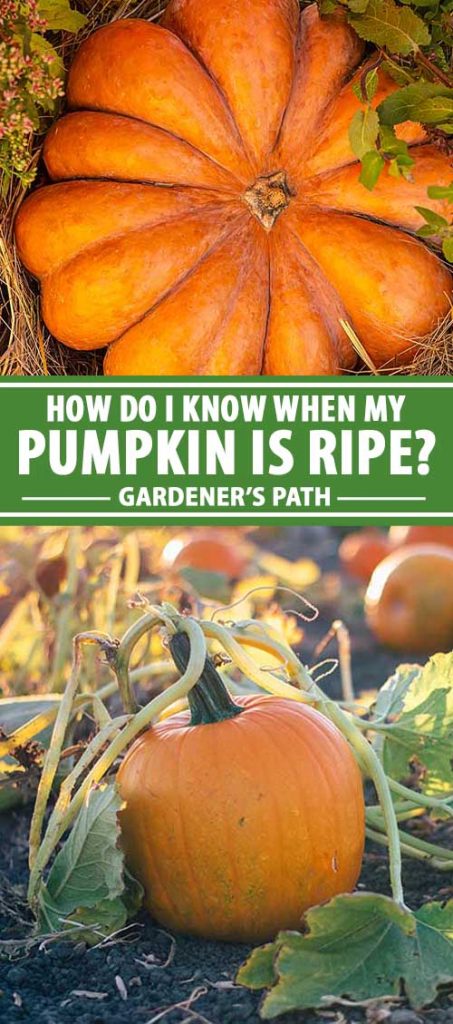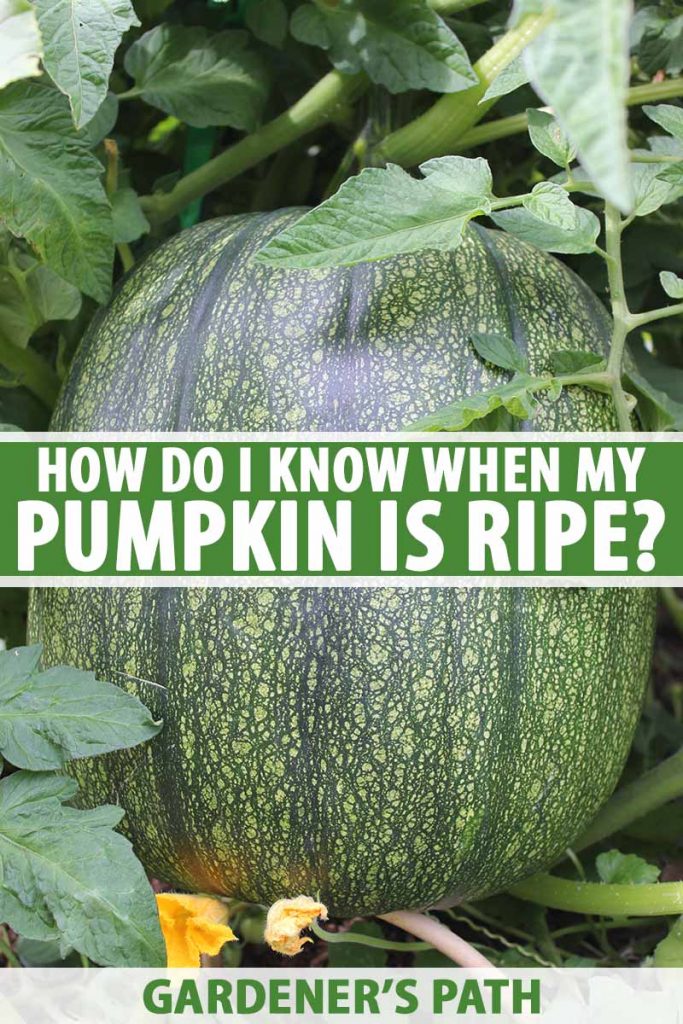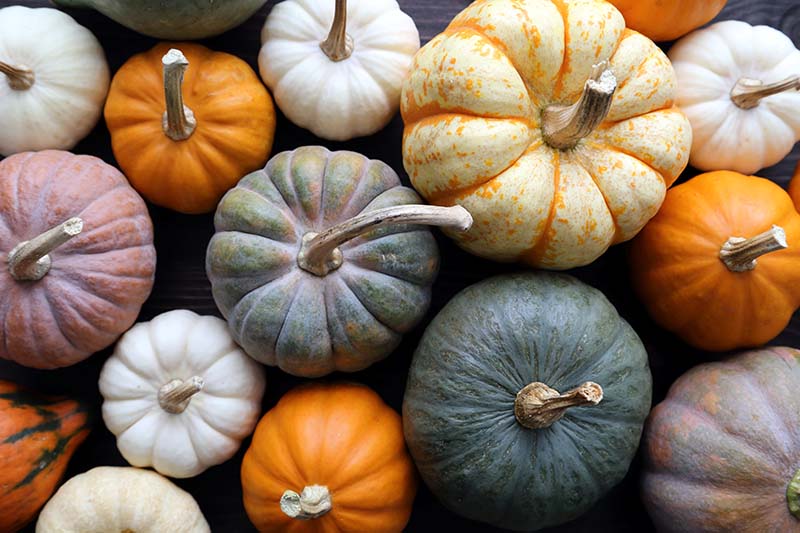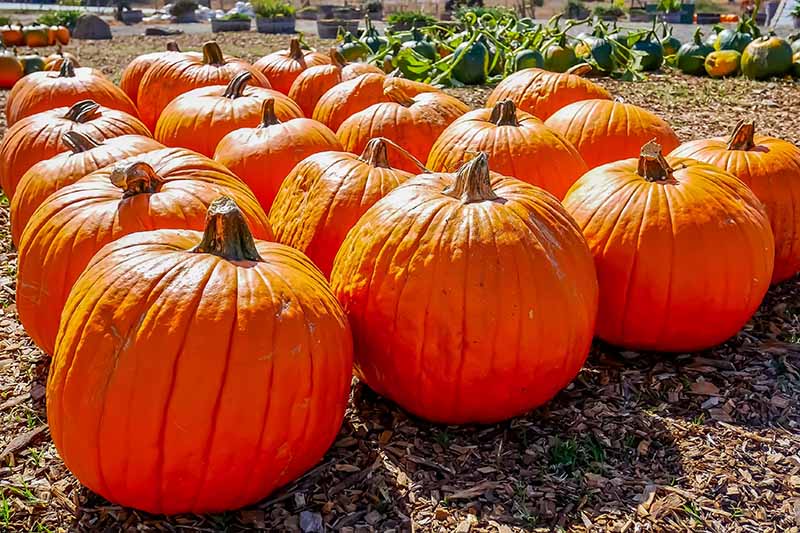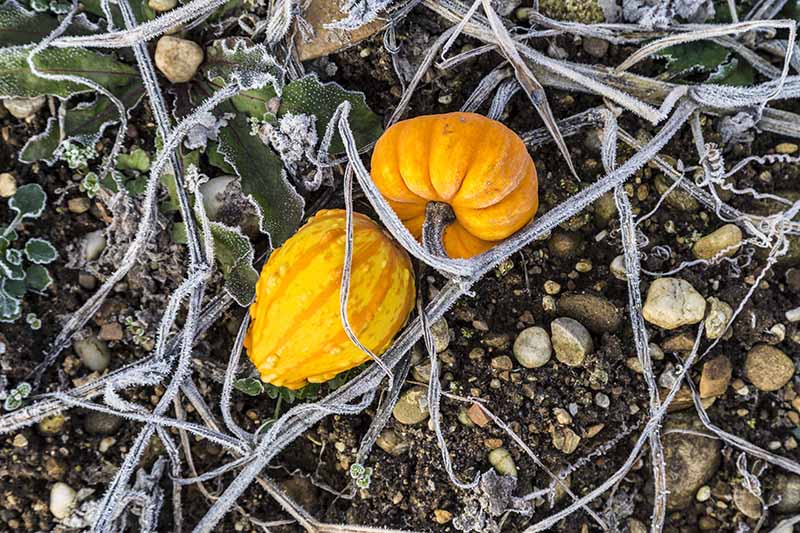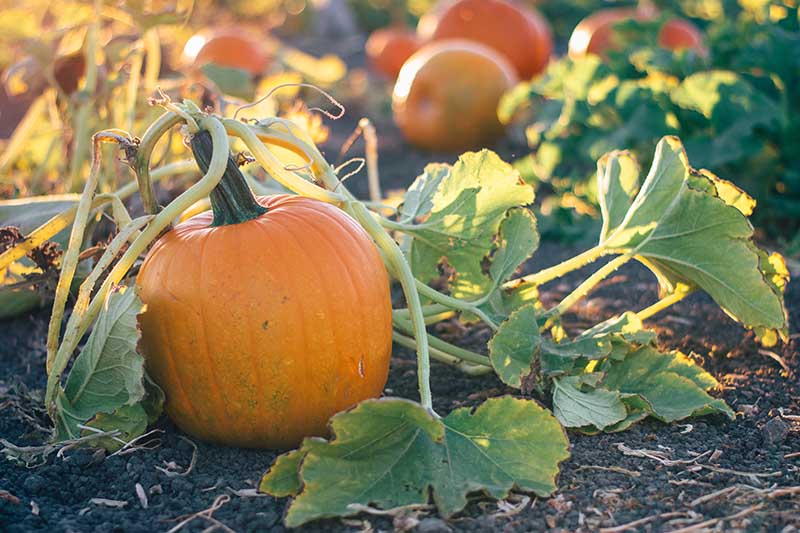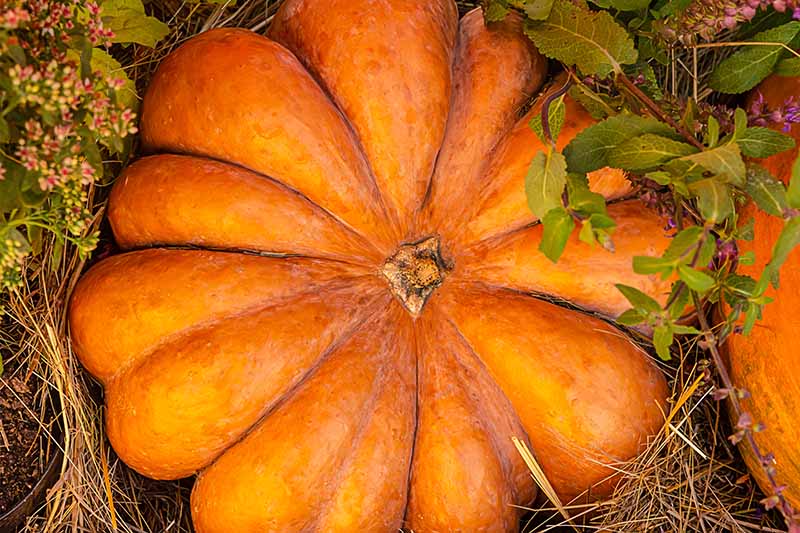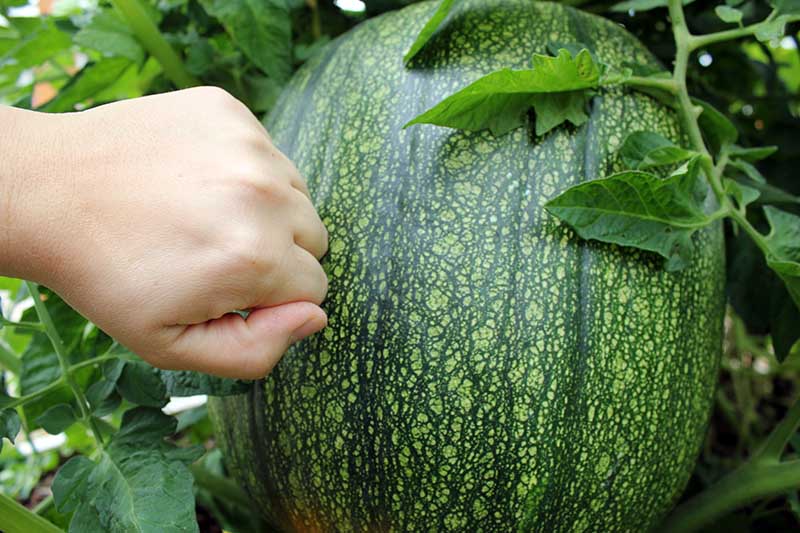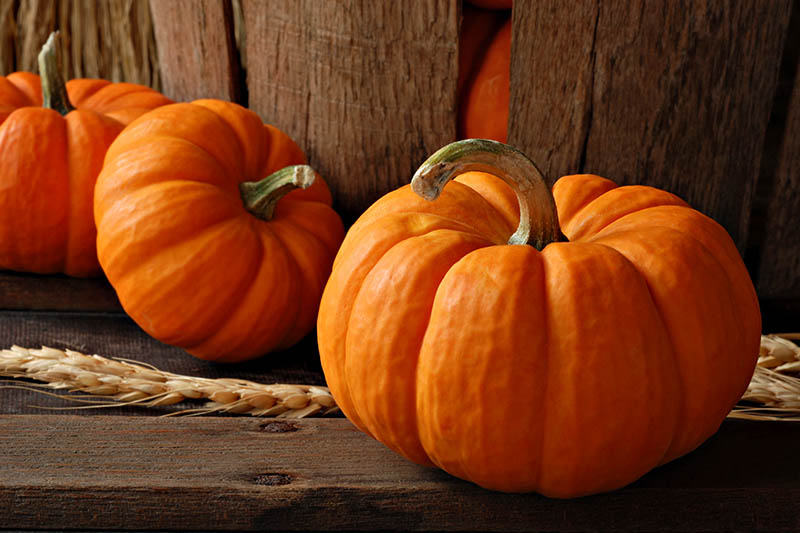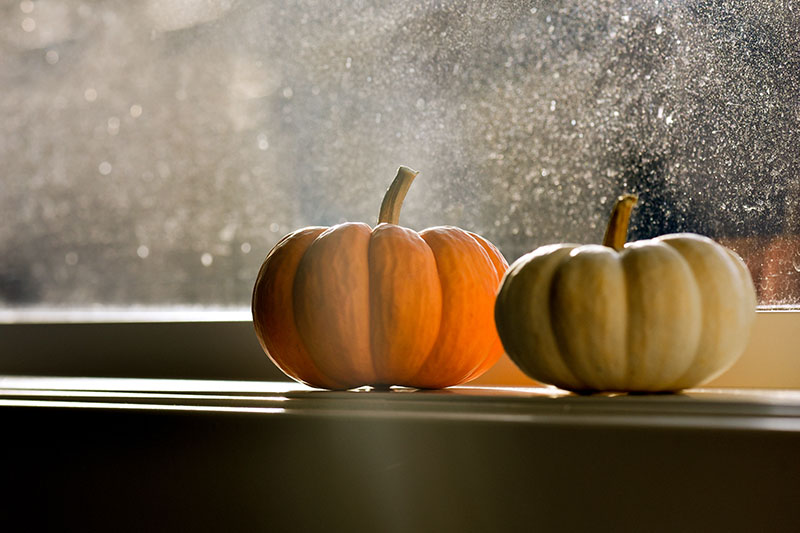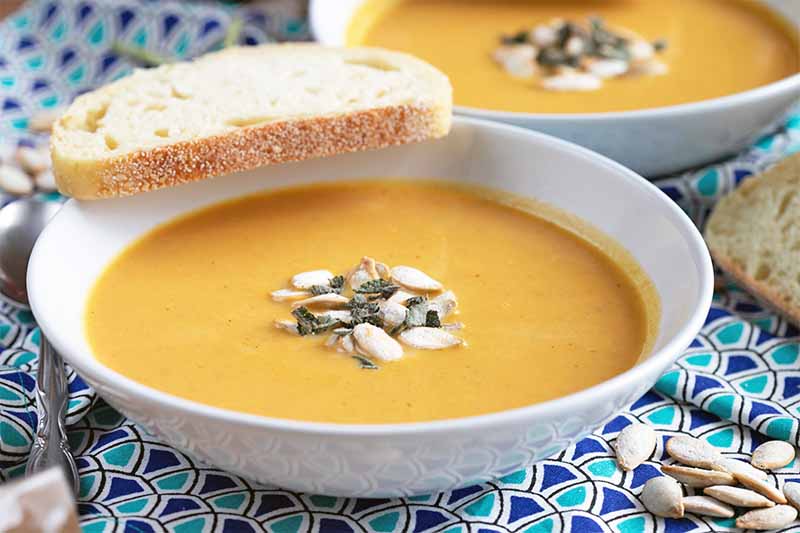“Wow!” said my friend. “That’s beautiful. It looks like a watermelon!” She was right. My ‘Howden’ was enormous, but green through and through. And this got me wondering: how would I know when it was ripe? I knew it had something to do with the green color changing to the classic rich orange that this cultivar typically exhibits. But did it have to turn orange in order to be ripe? Were there other signs to look for? We link to vendors to help you find relevant products. If you buy from one of our links, we may earn a commission. It may come as a relief to you to discover that gourds offer plenty of signs that they’re ready for picking. As long as you know what to watch out for, you’re sure to pick your pumpkin at its prime, to enjoy as a Halloween decoration, pureed and baked in a pie, or slow-cooked to perfection in your favorite fall soup.
Ready to discover the secrets of Cucurbit ripeness, figure out the best way to harvest the gourds, and discover an important post-harvest step you shouldn’t miss? Here’s what I’ll cover: By monitoring your Cucurbit plants and keeping your eye out for these five signs, you won’t miss the perfect picking time.
1. It’s the Right Time of Year
Most squashes, whether they’re cultivars of Cucurbita pepo, C. moschata, or C. maxima, take about three to four (or even five) months to mature. It all depends on your climate, the variety that you’ve planted, and the gourd’s growing conditions.
An important thing to do is keep tabs on how long your plant has been growing and compare it to the days-to-maturity section on your seed packet. I recommend using a gardening journal to keep this information organized. In most cases, if you sow seeds in late April or early May, your squash will ripen sometime between late August and late October. There’s a reason that these plump fruits are associated with the delights of autumn!
But instead of using this timeframe as a hard and fast rule, just start keeping your eye out for signs of readiness once mid-August hits. That way, you won’t pick the fruit too early – or too late. When you start waking to crisp fall mornings, it’s time to start monitoring your local weather more closely. While pumpkins can handle a light frost that kills the vine, they won’t ripen after picking if you let them sit out in the garden during a heavy frost, or if they’re exposed to temperatures that dip below 32°F.
So you’ll need to harvest them early and let them ripen indoors if you notice that the weather’s going to cool off significantly, or your first killing frost is on the way.
2. The Gourd Turns the Desired Color
All immature gourds are green, so it’s common sense to assume that a pumpkin isn’t ripe until it turns orange, right? Or whatever color it’s meant to be at maturity?
Well… sort of. Sometimes a squash won’t turn fully orange even after the vine dies in the fall. (If this happens, you can still ripen the fruit off the vine. Read our guide to ripening green pumpkins for more info. Or maybe it’ll turn the right color, but the rind won’t be quite as firm as it should be.
But as a general rule, color is a good indicator that a gourd is ready for picking. When my ‘Howden’ begins to turn golden-orange, I’ll know that picking time is near. Here’s the thing, though: if you’re going to cook your pumpkins soon after harvest, you can pick them when they’ve still got green spots. You also don’t need to worry quite so much about the hardness of the rind in this case, as you would if you were planning to use your harvest for decoration instead.
3. Your Fingernail Doesn’t Puncture the Rind
Along with color, one of the most important indicators of squash maturity is the shell, which should be hard and firm if you aim to keep a pumpkin around for a few months. If you’re pretty sure your gourd is ripe, try poking your fingernail into the rind.
If your nail makes a small dent but does not puncture the skin, that’s a good sign that the rind has matured into a hard shell and it’s time to pick your Cucurbit. The shell will protect the pumpkin from pests and diseases after it’s picked, which means it can be featured as a bright spot of autumnal sunshine on your front porch for a nice, long time. For those of you growing pie pumpkins, you can harvest your fruit when the rinds are firm but not rock-hard – especially if you’re planning on making pies within the next week or so, or roasting and pureeing the flesh to keep in the freezer.. Otherwise, you’ll want to do that special step I mentioned before, which we’ll talk about in just a moment.
4. You Knock on the Rind and Hear a Hollow Sound
Say your gourd has mostly turned orange, and the vine around it is beginning to succumb to autumn’s cool temperatures. One way to check and see if it’s ready to pick is to gently knock on the rind. Right now, when I knock on my ‘Howden,’ the sound is solid. A lame explanation, I know, but it definitely doesn’t sound hollow. When I hear a hollow thunk instead, I’ll know it’s ready for picking.
5. The Stem Begins to Turn Brown
If the stem of your gourd feels hard to the touch, as opposed to being slightly spongy, check the color. Is it starting to dry out and turn brown? That’s a good sign that the vine is dying, and starting to taper down the amount of nutrients it gives to the gourd. You can actually allow the entire vine to die around your squash before you pick it – this will happen after the first light frost. But you don’t want to leave it there forever.
How to Harvest a Ripe Pumpkin
Now that you know when to pick, let’s talk about how to do it. You’ll need a clean, sharp knife. All you have to do is measure the stem at least three to five inches from the top of the fruit, and carefully cut the stem away from the vine.
The portion of stem that you leave on the gourd will actually continue to provide the last dregs of nutrients to the fruit, meaning it will last longer after it’s harvested. Make sure you don’t carry the fruit by the stem, though: it’s not a handle. If the stem breaks off, your gourd will start to rot right away. Make sure you support the bottom and sides when you carry it, and leave the stem area clear.
Curing Your Gourd
Ah, finally! We have arrived at the not-so-secret step to a long-lasting pumpkin: curing. Here’s what curing can do for your gourd:
Reduce the amount of water in the flesh Harden the shell even more, making the fruit less prone to rot Improve the flavor, making the flesh sweeter Help heal any nicks or scratches in the skin
Don’t worry, this step is easier than it sounds! All you need to do is wipe the freshly cut fruit down with a dry cloth, and leave it in a warm, sunny spot for 10 days to two weeks.
You can do this outside if the temperatures are consistently around 80°F after harvest, or indoors if you don’t. Just make sure the area has good ventilation and lots of sunshine. If your area is extra hot, you may want to provide a few hours of shade each day so the skin doesn’t get sunscald. After a week and a half or so of curing, your pumpkin will store nicely in a cool (50°F or slightly higher), dark, dry place until you can cook it. Or, it’ll keep well on your front porch, as long as temperatures don’t drop below 45°F. You could also place it on your dining room table or sideboard at this point, as a fall decoration.
Pumpkin Perfection
What will you do with your beautifully ripe, freshly cured Cucurbit? Turn it into a jack-o’-lantern, or roast and puree the flesh to make it into a pie? I know what I’ll be doing with mine: making my favorite curried pumpkin soup from our sister site, Foodal, and baking Foodal’s soft and chewy pumpkin chocolate chip cookies for dessert. If that’s not the ultimate cozy, comforting fall meal, I don’t know what is. Tell me, what’s your favorite thing to do with your homegrown gourds? I’d love to hear your stories and questions in the comments below. In the meantime, check out a few more of our articles on pumpkins next:
How to Train Pumpkins to Grow on a Trellis How to Grow Giant Pumpkins How to Fix Wilting Pumpkin Plants: 11 Common Culprits Nutrition and Health Benefits of Pumpkin Seeds
Photos by Laura Melchor and Meghan Yager © Ask the Experts, LLC. ALL RIGHTS RESERVED. See our TOS for more details. Uncredited photos: Shutterstock.
